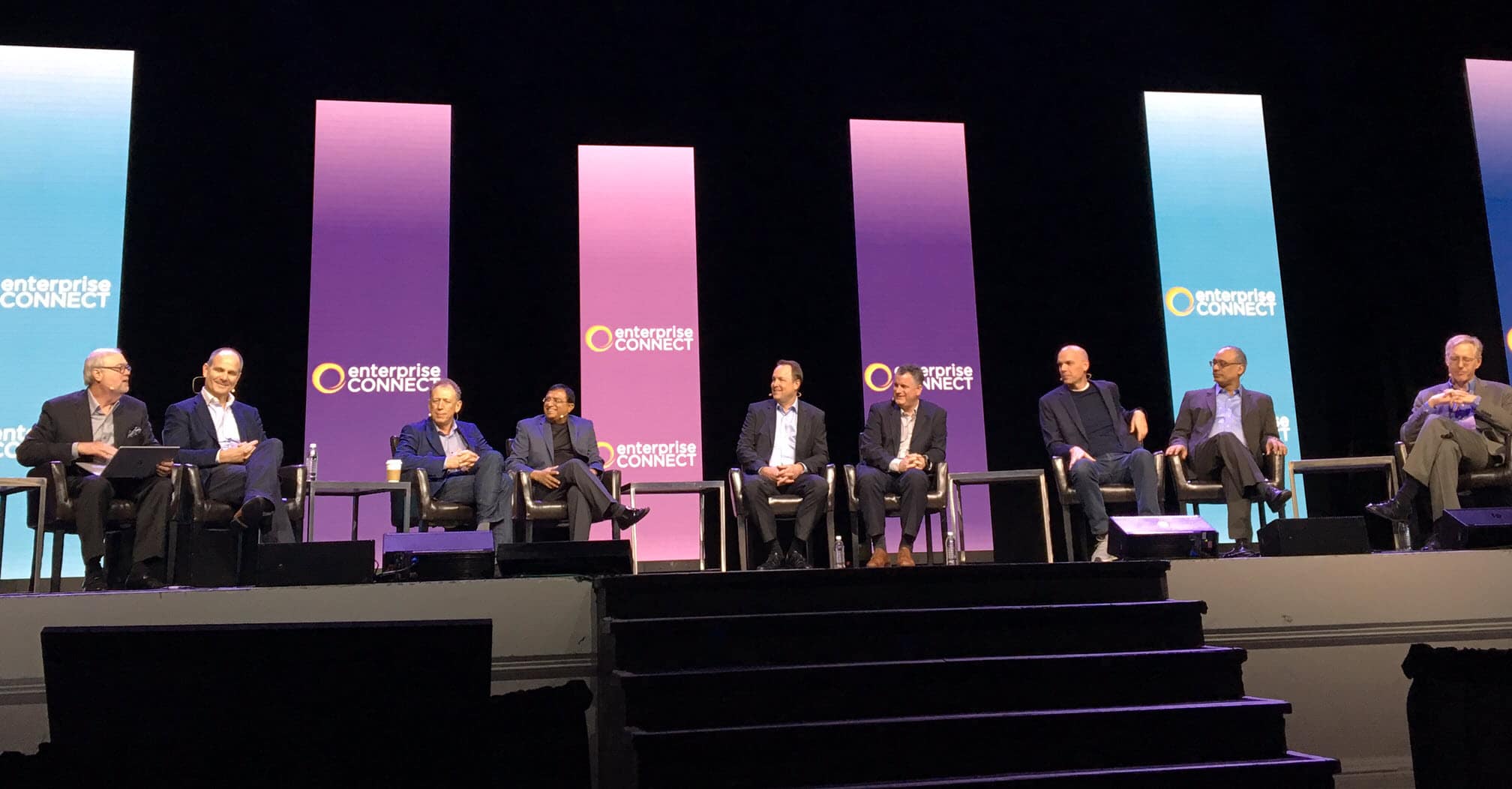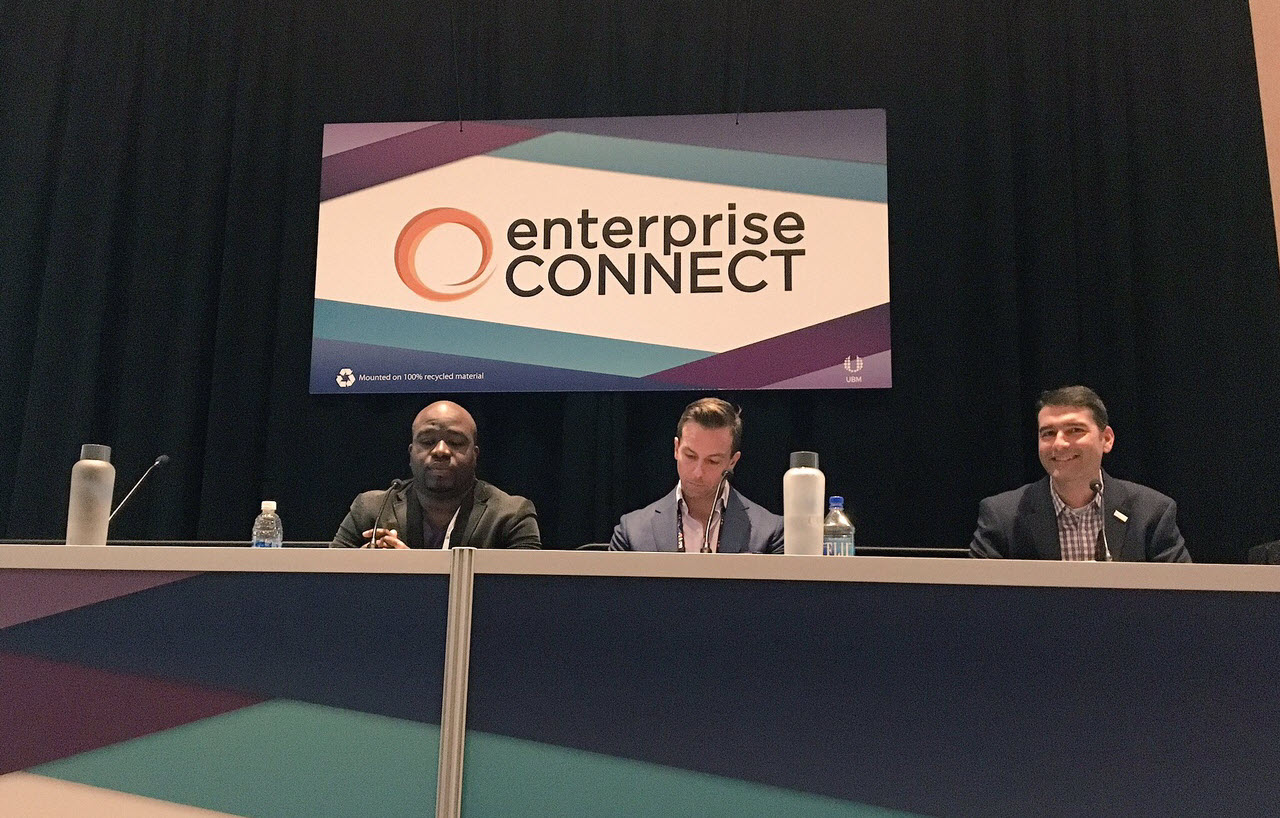Judging by the first day of programming at the Enterprise Connect conference in Orlando, the fact that the cloud is the future of communications and collaboration is no longer up for debate — the only question is how quickly and how completely businesses will get there.
Both RingCentral CEO Vlad Shmunis and SVP of Cloud Operations Curtis Peterson found themselves in the position of advocating for a pure cloud implementation in panel discussions where they were matched with executives from other companies who have a foot in both worlds. While other vendors tout the necessity of hybrid models that mix cloud services with on-premises hardware and software, given that they also support those legacy investments, RingCentral doesn’t sell or support anything other than cloud services.
“Cloud is taking over, and fundamentally on-prem is a thing of the past,” Shmunis said. “I can tell you some customers of all sizes do go pure cloud — because that’s all we have to offer.” The deployment model is important not so much because of the technical details but because of the innovation cloud software enables, given the ability to deliver new features in weeks rather than years, he said. “I struggle to understand why a company of any size would want to deal with anything on-prem.”
Peterson acknowledged the necessity of supporting hybrid models in some cases, but as a transitional measure. “The end goal is an all-cloud model that gives you the most flexibility,” he said.
Shmunis appeared on a panel of CEOs and business unit leaders from Vonage, NEC, Mitel, 8×8, Cisco, and Microsoft. The moderators were Eric Krapf, general manager and program chair of Enterprise Connect and publisher of No Jitter, along with analyst Jim Burton, founder and CEO C-T Link.
Burton led off the discussion by remarking that after years of rhetoric about unified communications, “we appear to be entering a new stage” where the cloud is making communications much more unified and integrated.
One of the things panelists agreed on is that communications in the cloud is more than voice. “It’s not just communications anymore; it’s about collaboration,” said Bob Davis, a corporate vice president at Microsoft. Megatrends such as an increase in the number of remote workers and freelancers make online collaboration increasingly important, he said.
“Voice is taking a smaller and smaller part of the user experience,” Shmunis agreed. The key is to allow users to switch smoothly between messaging and voice, as well as other modes of communication and collaboration such as file sharing. In addition, RingCentral partners with other cloud leaders to create joint products for online meetings and call center operations.
What customers appreciate, Shmunis said, “is we’re doing all this on a single invoice, globally, and with a very high emphasis on mobility, allowing our customers to leverage their investment in a mobile workforce.”
Peterson participated in a panel on the details of implementing cloud communications where he was elbow-to-elbow with a lineup of executives from ShoreTel, Mitel, and AT&T, with NetCraftsmen Principal Architect Terry Slattery as architect. Many of the audience questions dealt with issues of scalability and reliability.
Having forged peering relationships with more than 200 ISPs, RingCentral is capable of handling heavy network needs, Peterson said. Compared with a dedicated network, “we’re within a millisecond or two” but customers gain by eliminating an administrative burden. “We take that workload off your shoulders and put it on ours,” he said.
While others argued a hybrid solution may be necessary for very large implementations, he said each of the “pods” in a RingCentral cloud data center is capable of supporting hundreds of thousands of digital lines each. “We’re waiting for a customer to push our boundaries on that,” he said. Already, RingCentral has customers with many thousands of users, he said.
One point he did have to concede was when one audience member challenged RingCentral’s claim of global reach, based on a recent expansion where its cloud services now support local numbers in 32 countries. “I thought there were more than 30 countries in the world,” the man said dryly.
True, Peterson said, but having recently added distribution in 13 European countries, RingCentral now covers the world’s major economies. “That doesn’t satisfy every single remote usage case, but that’s where the hybrid model can play a role,” he said. In some of the remaining countries, RingCentral and other cloud providers are waiting for changes in government regulation to allow them to offer services. Even then, “we can put together a bridge service in most of those countries,” he said.
RingCentral also has people fusing its service from countries around the world, regardless of whether they are using a local number, because they can sign in from anywhere an Internet connection is available.
As Peterson told another audience member who asked which approach to deployment is correct, RingCentral and competing vendors offer “diverse options” for getting to the cloud. “You’re going to be in the driver’s seat to decide how you want to get it done.”
Originally published Mar 28, 2017, updated Jul 20, 2021





